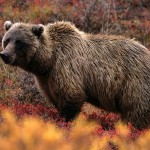Bear Bile Farming Poses Ongoing Threat to Wild Bear Conservation
According to experts, the existence of bear bile farms has not reduced the pressure on wild bear populations. Instead, confiscation records indicate that cubs are routinely taken from the wild, especially from Southeast Asia, to stock bear farms, which supply much of the medicines and products in demand throughout Asia.
The issue of bear farms will be on the agenda at next month’s IUCN World Conservation Congress in Korea after a motion to phase out commercial bear bile farming was tabled for debate at the meeting.
Rising prices of wild cubs on the black market indicate a high demand. At the same time, surveys have found that that farms in Lao PDR, Myanmar and Viet Nam show low success in breeding bears. Breeding records on Chinese farms are not available to corroborate the claim that they are self-sustaining. There is little evidence to support claims that farms relieve pressure on wild bear populations, given bear populations are in decline in the bear-farming countries in Southeast Asia and China.
Bile is used as a medicine for specific illnesses, and has a long history in Chinese culture. Consumer demand for wild-sourced bear bile continues to drive poaching with many consumers believing wild bile is more potent and pure.
Within a decade of farms opening in Lao PDR, demand for wild bear bile skyrocketed, and poachers have taken bears to supply not only this lucrative market, but also to supply farms.
The motion before IUCN highlights how bile farming has created a much wider market of consumers who consider this product an essential “tonic” to promote and maintain good health, rather than a medicine to fight illness.
A 2011 report by TRAFFIC in Southeast Asia, Pills, Powders, Vials and Flakes: The Bear Bile Trade in Asia (PDF, 1 MB), found bear bile extraction facilities to be a major source of illegal products entering the international market, in violation of national laws, and the Convention on International trade in Endangered Species of Wild Fauna and Flora (CITES).
